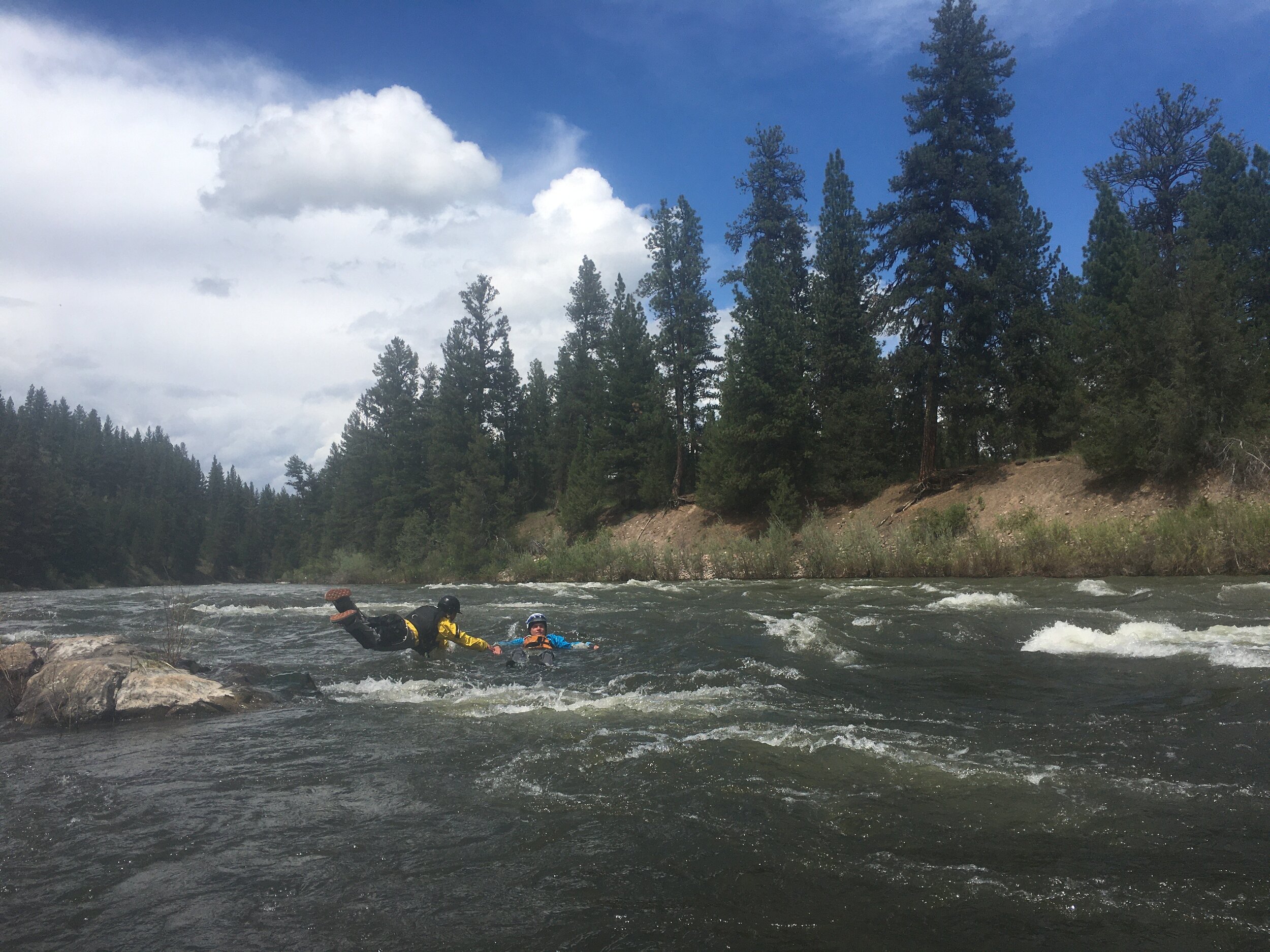How Do Raft Guides Become Raft Guides?
If you have ever gone whitewater rafting, you may have wondered what sort of qualifications your guide has to be taking you down the river. You don’t want to let just anyone take you through challenging rapids, right? Whitewater rafting is such a niche industry, so how does one become a raft guide? There are few jobs that can compare to being a raft guide. A raft guide is expected to entertain their guests while safely navigating rapids, and to be prepared for any possible accidents that may occur while on the river. There is a lot of training that one must complete to become a guide, and most rafting companies require a guide school for new guides. This is where guides learn how to read and navigate whitewater, how to run rapids as a group, and how to properly command your crew to paddle. A lot of times new guides already have whitewater experience whether it be whitewater kayaking or rafting as a hobby. Because whitewater is so fun, many prior whitewater enthusiasts end up becoming raft guides so they can get paid to do what they love. Coming into guide school with prior whitewater experience is a huge advantage, as you already know one of the key elements to becoming a guide; how to read whitewater. Reading whitewater is how a guide safely navigates rapids by choosing the best line to take the raft down. There are three main obstacles to avoid when choosing the best line to navigate a rapid: holes, rocks, and strainers. Holes are when water flows over a rock in the river, which then shoots deep into the water and reverses back into itself. Depending on the size of this hydraulic, holes can easily surf or flip a raft. Strainers are considered to be anything sticking out into the water that could stop a boat or person from moving while water runs through it, similar to your pasta strainer at home. Strainers most commonly come in the form of logs and trees, but can also be metal or other debris. When looking out for these three obstacles, your guide will find the path of least resistance, known as the clean line in a rapid.
Another key part of guide school is how to run rapids as a team. This is especially important on higher consequence rivers, where the chances of flipping or falling out of the raft are much higher. The best strategy for rafting as a group is to always stay very close together so that there are many different rafts to help out any potential swimmers. Because the rapids can be so loud, guides will use a variety of hand signals to communicate with each other. These hand signals are useful in communicating hazards, the best line to take, and many other things. Even though the rapids may be loud, verbal communication is still a very important aspect of whitewater rafting. This is how guides instruct their paddlers on when to paddle and when not to paddle to give the boat the speed it needs to punch through the waves.
Besides taking a guide school, most guides are expected to have some sort of first aid training. This helps guides to be prepared for any medical emergency that may occur on the river. In the Wilderness First Aid course that I took to become a guide, we learned how to treat all different types of wounds and injuries that could possibly happen on the river. Another very important training course that many raft guides take is a swiftwater rescue course. In this course, you learn various different rescue techniques and practice rescue scenarios.
Swiftwater Rescue Course
Because there are so many different aspects that go into being a whitewater rafting guide, many guides have to do lots of training before they can safely take guests down the river. The next time you go whitewater rafting, ask your guide how much training it took for them to get where they are now, you’ll be thankful to know that your safety is in experienced hands!
Popular Outdoor Adventure Destinations
- Asheville, NC
- Austin, TX
- Charleston, SC
- Corpus Christi, TX
- Ennis, MT
- Eureka, CA
- Jackson Hole, WY
- Jacksonville, FL
- Key West, FL
- McCall, ID
- Miami, FL
- Missoula, MT
- Naples, FL
- Panama City Beach, FL
- Phoenix, AZ
- Portland, OR
- Riggins, ID
- San Antonio, TX
- San Diego, CA
- Spokane, WA
- Tampa Bay, FL
- Tillamook, OR
- West Glacier, MT
- West Palm Beach, FL
- West Yellowstone, MT
Outdoor Adventures by State
- Alabama, AL
- Arizona, AZ
- California, CA
- Colorado, CO
- Delaware, DE
- Florida, FL
- Georgia, GA
- Idaho, ID
- Kentucky, KY
- Louisiana, LA
- Maine, ME
- Michigan, MI
- Minnesota, MN
- Montana, MT
- Nevada, NV
- New Hampshire, NH
- New Mexico, NM
- New York, NY
- North Carolina, NC
- Oregon, OR
- Pennsylvania, PA
- South Carolina, SC
- Tennessee, TN
- Texas, TX
- Vermont, VT
- Washington, WA
- Wisconsin, WI
- Wyoming, WY



